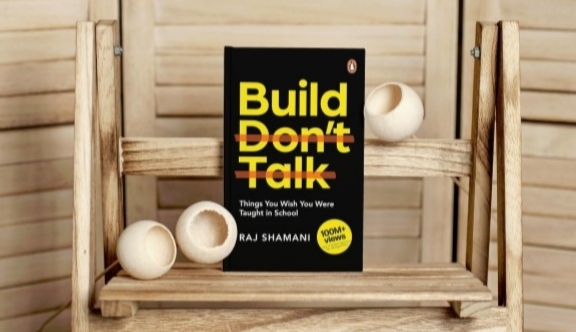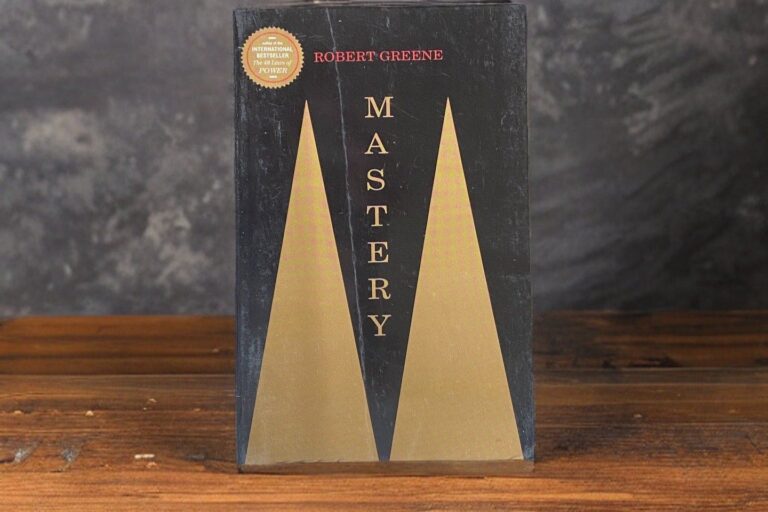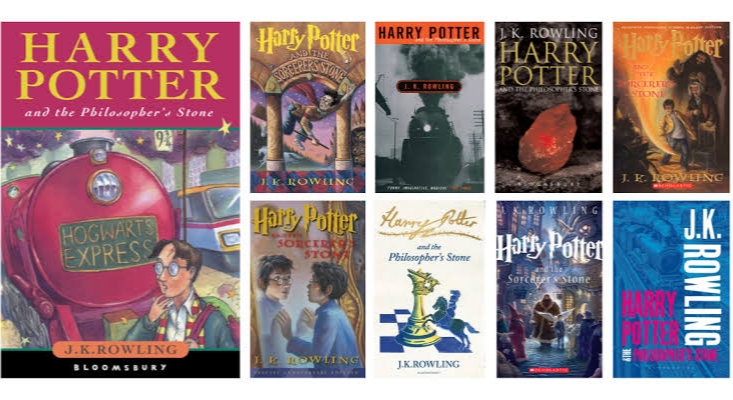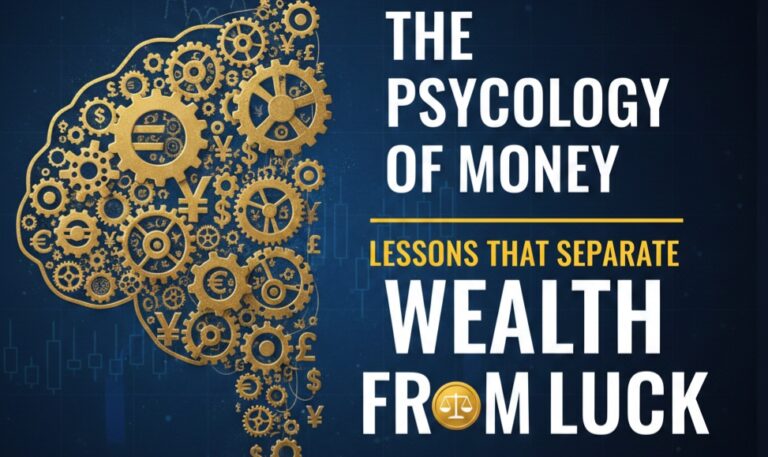
In today’s fast-paced world, action often speaks louder than words. Build, Don’t Talk has become one of the most discussed self-development and productivity books, inspiring entrepreneurs, creators, and professionals to focus on execution instead of endless planning or empty discussions. This book challenges the culture of over-explaining and positions “building” as the truest path to progress.
In this detailed summary and analysis of Build Don’t Talk, we’ll explore its core ideas, expert opinions, psychological insights, 2025 relevance, pros & cons of different reading needs (summary, review, quotes, takeaways), and practical examples for applying the book’s philosophy.
Why “Build Don’t Talk” Matters in 2025
The year 2025 marks an era where digital distractions, social media validation, and content-overload culture dominate. According to a 2025 Pew Research Center survey, over 67% of readers prefer action-oriented self-help content over purely theoretical books. This explains why Build Don’t Talk resonates—it cuts through noise and urges readers to move from talkers to doers.
Psychologist Dr. Carol Dweck, known for her work on the “Growth Mindset,” emphasizes:
“People who execute consistently, even imperfectly, often outperform those who spend excessive time in ideation and discussion.”
This aligns perfectly with the philosophy of Build Don’t Talk.
Build Don’t Talk: Core Summary
1. Ideas Are Cheap, Execution Is Everything
- Most people have good ideas, but only a small percentage execute.
- Talking about ideas without action creates a false sense of accomplishment.
2. Build First, Then Share
- The book suggests prototyping, testing, and building something tangible before broadcasting.
- Proof of work creates credibility and eliminates unnecessary debates.
3. The Cost of Over-Talking
- Research from Harvard Business Review (2024) shows that teams who discuss plans endlessly waste 31% more time than those who prototype early.
- Talking too much builds psychological resistance because your brain feels you’ve already achieved something.
4. Action Builds Confidence
- Instead of waiting for confidence before action, confidence grows as a by-product of doing.
- Small wins from building reinforce motivation.
5. Legacy Over Hype
- True builders leave behind results (products, businesses, art), while talkers are forgotten.
Expert Opinions on Build Don’t Talk
- James Clear (Author of Atomic Habits): “This book echoes the principle that habits compound—consistent building creates exponential results, while talking only delays growth.”
- Angela Duckworth (Author of Grit): “Resilience is not in words but in daily execution. Build Don’t Talk captures that essence well.”
- Seth Godin (Marketing Expert): “Ship it. Don’t just discuss it. This book is a manifesto for doers.”
Key Takeaways from Build Don’t Talk
- Stop seeking validation before doing the work.
- Silence is power—work in the background until results speak.
- Small consistent actions beat big promises.
- Accountability through creation—what you build reflects your mindset.
- Replace meetings with making—focus on outcomes.
Pros & Cons of Reading Options for Build Don’t Talk
| Reader Need | Pros | Cons | Best For |
|---|---|---|---|
| Summary | Quick insights, saves time, action steps highlighted | Misses storytelling & depth | Busy professionals |
| Full Review | Balanced view, includes pros/cons & context | Longer to consume | Readers deciding if they should buy |
| Quotes | Inspiration, easy to share | Lacks full framework | Motivational seekers |
| Key Takeaways | Action-oriented, implementable | Oversimplified at times | Entrepreneurs & students |
| Complete Book | Full depth, personal stories, context | Time commitment | Serious readers, self-improvers |
Practical Examples of Applying Build Don’t Talk
Example 1: Entrepreneur
Instead of pitching endlessly to investors, create a working prototype or MVP (Minimum Viable Product). Investors respect tangible results more than verbal promises.
Example 2: Student
Instead of saying “I’ll study more,” start solving one practice problem daily. Building knowledge beats planning.
Example 3: Writer
Rather than endlessly tweeting about your upcoming book, write 500 words daily. Completed drafts > talking about intentions.
Example 4: Fitness
Instead of announcing “I’m joining the gym,” start with 10 push-ups daily at home. Visible results attract genuine support.
Reading Habits & Stats (2025 Data)
- 52% of Gen Z readers prefer summaries & bite-sized insights before committing to a full book (Source: Global Reading Index 2025).
- Audiobook sales grew by 18% in 2025, showing that people want quick, actionable consumption.
- Top 10 self-help bestsellers of 2025 show a common theme: action > theory (Build Don’t Talk, The 1% Rule Revisited, Atomic Habits Expanded Edition).
Pros & Cons of the Book Build Don’t Talk
Pros
- Direct and action-driven message.
- Universal application (entrepreneurship, academics, personal life).
- Easy to implement with practical frameworks.
Cons
- May feel repetitive if you’ve read similar books (Atomic Habits, The Lean Startup).
- Less focus on emotional or philosophical depth.
- Assumes a high degree of self-discipline.
FAQs on Build Don’t Talk
1. Is Build Don’t Talk suitable for beginners?
Yes. Its simple message—focus on execution over words—is universally applicable for students, professionals, and entrepreneurs.
2. How is it different from other productivity books?
While many books emphasize planning and mindset, Build Don’t Talk is radical in urging building first, talking later.
3. Can I apply this philosophy in teamwork?
Absolutely. Teams that build prototypes early often outperform those stuck in endless meetings.
4. Is a summary enough, or should I read the whole book?
If you want inspiration and quick insights, a summary works. For deeper application and real-life case studies, the full book is recommended.
5. Is it relevant in 2025 and beyond?
Yes. In an era of AI-driven productivity and noise-heavy social media, the principle of building over talking is timeless.
Conclusion
The Build Don’t Talk summary reveals a timeless truth: results speak louder than intentions. In 2025, where distractions and over-sharing dominate, this book serves as a wake-up call for doers. Whether you’re a student, entrepreneur, or professional, the key lesson is simple—don’t announce, just execute.
As author Ryan Holiday often reminds us, “Ego is the enemy.” Similarly, Build Don’t Talk reminds us that action beats ego every single time.
If you’re looking to transform ideas into results, this book is a must-read. Whether through summaries, reviews, or the full version, its message is clear: Stop talking. Start building.
Thank you for reading!
Stay tuned for more inspiring Books summary, Author spotlight, Trend Books & more get full information on TheBooksX.com!







so much superb information on here, : D.